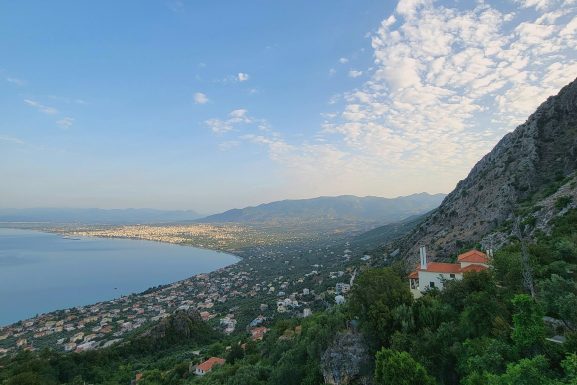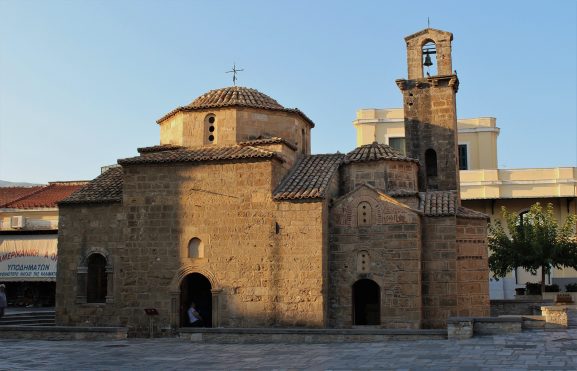Methoni
Methoni, formerly Methone or Modon (Venetian: Modon), is a village and a former municipality in Messenia, Peloponnese, Greece. Since the 2011 local government reform it is part of the municipality of Pylos-Nestor, of which it is a municipal unit. The municipal unit has an area of 97.202 km2. Its name may be derived from Mothona, a mythical rock. It is located 11 km south of Pylos and 11 km west of Foinikounta. The municipal unit of Methoni includes the nearby villages of Grizokampos, Foinikounta, Foiniki, Lachanada, Varakes, Kainourgio Chorio, Kamaria, Evangelismos, and the Oinnoussai Islands. The islands are Sapientza, Schiza, and Santa Marina; they form a natural protection for Methoni harbour.
Methoni in art and literature
One of the possible interpretations of Vittore Carpaccio’s Young Knight in a Landscape identifies the knight as the Venetian patrician Marco Gabriel, who was rector (governor) of Methoni during the Ottoman siege of 1500. His family would have commissioned the painting as a tribute to his memory. Being the only Venetian survivor of the siege, he had been accused of cowardice; taken by the Ottomans to Constantinople, he was beheaded there on 4 November 1501.
About seventy years later, after the Battle of Lepanto (7 October 1571), Miguel de Cervantes was taken to Methoni as a prisoner and spent some time in the Turkish tower. He might have conceived a few pages of the Don Quixote while there.
On 10 August 1806, François-René de Chateaubriand disembarked at Methoni and started his Grand Tour across Greece and the Middle East, an account of which he published in 1811 as the Itinéraire de Paris à Jérusalem (Itinerary from Paris to Jerusalem).
Source: Methoni, Messenia



